The fact that the right hand of St. John the Russian had been found was reported by Metropolitan of Chalcis Chrysostomos. He said that the hand was separated from the holy relic and was first transferred to Mount Athos, and then ended up with two brothers.
The Holy Confessor John the Russian was born at the end of the 17th century in Little Russia and was raised in piety and love for the Church of God. Upon reaching adulthood, he was called up for military service, served as a simple soldier in the army of Peter the Great and participated in the Russian-Turkish war.
At the end of his speech at the anniversary event dedicated to the 100th anniversary of the arrival of the relics of St. John the Russian from Cappadocia on the island of Evia, His Eminence announced the good news to the believers, some of whom shed tears.
According to him, on May 27, the day of the feast of the miraculous saint, Archbishop of Athens and All Greece Jerome will arrive in Prokopi with the right hand of the saint, which will be placed in the urn where his relics are located.
He said that the hand was separated from the holy relic and was initially taken to Mount Athos, and then ended up with two brothers.
According to him, after communicating with them, they agreed that the right hand of St. John the Russian should be transferred to the Holy Temple in Prokopi, Euboea: “The most amazing thing is that this year, on the feast day of the saint in Neo Prokopi, we will return the hand to the sanctuary.”
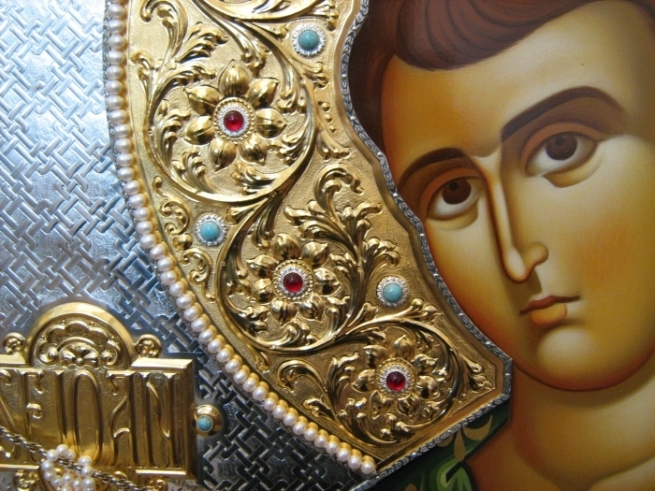
The Holy Confessor John the Russian was born at the end of the 17th century in Little Russia and was raised in piety and love for the Church of God. Upon reaching adulthood, he was called up for military service, served as a simple soldier in the army of Peter the Great and participated in the Russian-Turkish war.
During the Prut campaign of 1711, John, along with other soldiers, was captured by the Tatars, who sold him to the commander of the Turkish cavalry. He brought the Russian captive to his homeland in Asia Minor, to the village of Prokopiy (Urkup in Turkish). The Turks tried to convert captured Christian soldiers to Islam: some were persuaded and tempted, others, more persistent, were beaten and tortured. Saint John was not seduced by the promised earthly blessings and bravely endured cruelty, humiliation and beatings.

He was often tortured by his master in the hope that his slave would convert to Islam. However, Saint John resolutely opposed the will of his master and answered: “Neither with threats nor with promises of wealth and pleasures will you be able to deviate me from my holy faith. I was born a Christian, I will die a Christian.” The bold words and firm faith of the confessor, his fearlessness and righteous life humbled the master’s cruel heart. He stopped torturing and blaspheming the captive, no longer forced him to renounce Christianity, but only forced him to take care of the cattle and keep in order the stall, in the corner of which was the bed of St. John.
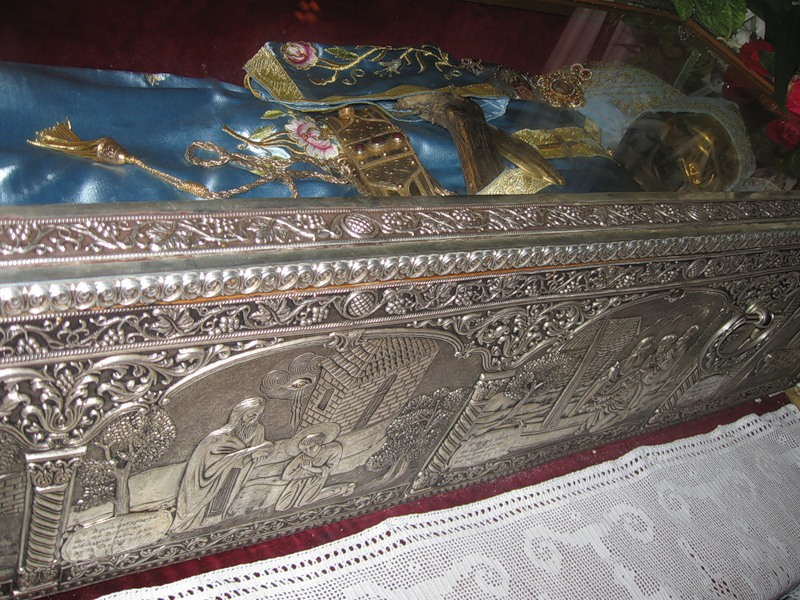
From morning until late evening, the saint of God served his master, conscientiously fulfilling all his orders. In the cold of winter and in the heat of summer, half naked and barefoot, he performed his duties. Other slaves often mocked him, seeing his zeal. Righteous John was never angry with them; on the contrary, on occasion he helped them in their work and consoled them in trouble. Such sincere kindness of the saint pleased the master and slaves. The owner began to trust righteous John so much, to respect him for his honesty and nobility, that he invited him to live as a free man and settle wherever he wished. However, the ascetic chose to stay in the stables, where every night he could freely labor in prayerful solitude, strengthening himself in goodness and love for God and people. Sometimes he left his quiet refuge and, under the cover of darkness, came to the church of the Holy Great Martyr George, where he prayed earnestly on the porch, kneeling. In the same church on holidays he received the Holy Mysteries of Christ. At the same time, Righteous John still served his master and, despite his poverty, always helped the needy and sick, sharing his meager food with them.
At the end of his arduous and ascetic life, Saint John fell ill and, feeling his death approaching, called a priest to receive a blessing for the last time. The priest, fearing to go with the Holy Gifts to the house of the Turkish commander, put them in an apple and safely handed them over to Righteous John. Having glorified the Lord, he received communion of the Holy Mysteries of Christ and went to God. The righteous death of the holy confessor John the Russian followed on May 27, 1730. When the owner was informed that slave John had died, he called the priests and handed over the body of Saint John to them, who buried him according to Christian custom. Almost all Christians living in Procopius gathered for the burial; they accompanied the body of the righteous man to the Christian cemetery.
Three and a half years later, the priest was miraculously informed in a dream that the relics of St. John remained incorrupt. Soon the holy relics of the righteous man were transferred to the church of the Holy Great Martyr George and placed in a special shrine. The new saint of God began to be glorified by countless grace-filled miracles, the fame of which spread to remote cities and villages. Christian believers from different places came to Procopius to venerate the holy relics of John the Russian and received grace-filled healings. Not only Orthodox Christians, but also Armenians and Turks began to venerate the new saint, turning to the Russian saint with a prayer request: “Servant of God, do not bypass us with your mercy.”
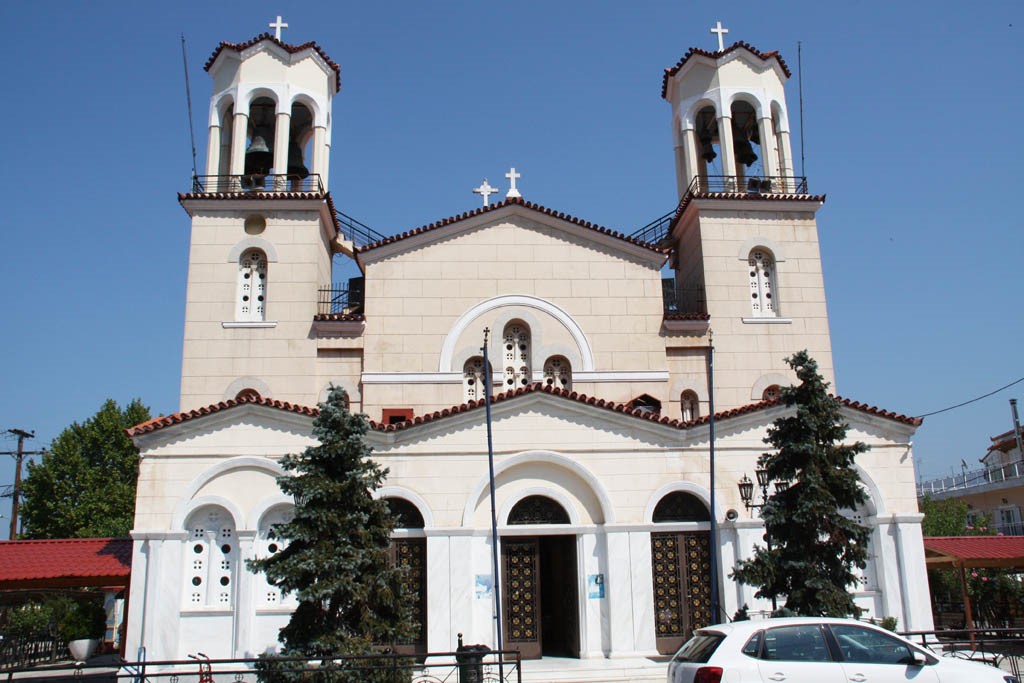
In 1881, part of the relics of St. John was transferred to the Russian Monastery of the Holy Great Martyr Panteleimon by the monks of Holy Mount Athos, who had previously been miraculously saved by the saint of God during a dangerous journey. At the expense of this monastery and the residents of Procopius, the construction of a new church began in 1886, since the church of the Holy Great Martyr George, where the relics of St. John were located, had fallen into disrepair.
On August 15, 1898, a new church was consecrated in the name of St. John the Russian, with the blessing of the Ecumenical Patriarch Constantine V, by Metropolitan John of Caesarea.
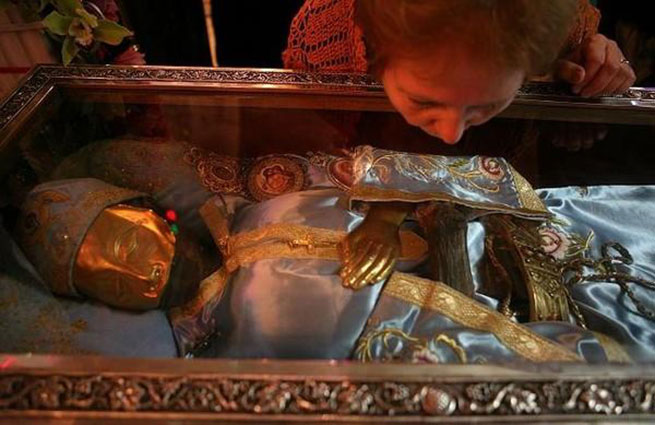
In 1924, the inhabitants of Procopius of Caesarea, moving to the island of Euboea, brought with them the relics of St. John the Russian. For several decades they were in the Church of Saints Equal-to-the-Apostles Constantine and Helen in New Procopius on Euboea, and in 1951 they were transferred to a new temple in the name of Saint John the Russian. Thousands of pilgrims flock to him from all over Greece, especially on his memorial day, May 27.
During the Prut campaign of 1711, John, along with other soldiers, was captured by the Tatars, who sold him to the commander of the Turkish cavalry. He brought the Russian captive to his homeland in Asia Minor, to the village of Prokopiy (Urkup in Turkish). The Turks tried to convert captured Christian soldiers to Islam: some were persuaded and tempted, others, more persistent, were beaten and tortured. Saint John was not seduced by the promised earthly blessings and bravely endured cruelty, humiliation and beatings.

He was often tortured by his master in the hope that his slave would convert to Islam. However, Saint John resolutely opposed the will of his master and answered: “Neither with threats nor with promises of wealth and pleasures will you be able to deviate me from my holy faith. I was born a Christian, I will die a Christian.” The bold words and firm faith of the confessor, his fearlessness and righteous life humbled the master’s cruel heart. He stopped torturing and blaspheming the captive, no longer forced him to renounce Christianity, but only forced him to take care of the cattle and keep in order the stall, in the corner of which was the bed of St. John.

From morning until late evening, the saint of God served his master, conscientiously fulfilling all his orders. In the cold of winter and in the heat of summer, half naked and barefoot, he performed his duties. Other slaves often mocked him, seeing his zeal. Righteous John was never angry with them; on the contrary, on occasion he helped them in their work and consoled them in trouble. Such sincere kindness of the saint pleased the master and slaves. The owner began to trust righteous John so much, to respect him for his honesty and nobility, that he invited him to live as a free man and settle wherever he wished. However, the ascetic chose to stay in the stables, where every night he could freely labor in prayerful solitude, strengthening himself in goodness and love for God and people. Sometimes he left his quiet refuge and, under the cover of darkness, came to the church of the Holy Great Martyr George, where he prayed earnestly on the porch, kneeling. In the same church on holidays he received the Holy Mysteries of Christ. At the same time, Righteous John still served his master and, despite his poverty, always helped the needy and sick, sharing his meager food with them.
At the end of his arduous and ascetic life, Saint John fell ill and, feeling his death approaching, called a priest to receive a blessing for the last time. The priest, fearing to go with the Holy Gifts to the house of the Turkish commander, put them in an apple and safely handed them over to Righteous John. Having glorified the Lord, he received communion of the Holy Mysteries of Christ and went to God. The righteous death of the holy confessor John the Russian followed on May 27, 1730. When the owner was informed that slave John had died, he called the priests and handed over the body of Saint John to them, who buried him according to Christian custom. Almost all Christians living in Procopius gathered for the burial; they accompanied the body of the righteous man to the Christian cemetery.
Three and a half years later, the priest was miraculously informed in a dream that the relics of St. John remained incorrupt. Soon the holy relics of the righteous man were transferred to the church of the Holy Great Martyr George and placed in a special shrine. The new saint of God began to be glorified by countless grace-filled miracles, the fame of which spread to remote cities and villages. Christian believers from different places came to Procopius to venerate the holy relics of John the Russian and received grace-filled healings. Not only Orthodox Christians, but also Armenians and Turks began to venerate the new saint, turning to the Russian saint with a prayer request: “Servant of God, do not bypass us with your mercy.”

In 1881, part of the relics of St. John was transferred to the Russian Monastery of the Holy Great Martyr Panteleimon by the monks of Holy Mount Athos, who had previously been miraculously saved by the saint of God during a dangerous journey. At the expense of this monastery and the residents of Procopius, the construction of a new church began in 1886, since the church of the Holy Great Martyr George, where the relics of St. John were located, had fallen into disrepair.
On August 15, 1898, a new church was consecrated in the name of St. John the Russian, with the blessing of the Ecumenical Patriarch Constantine V, by Metropolitan John of Caesarea.

In 1924, the inhabitants of Procopius of Caesarea, moving to the island of Euboea, brought with them the relics of St. John the Russian. For several decades they were in the Church of Saints Equal-to-the-Apostles Constantine and Helen in New Procopius on Euboea, and in 1951 they were transferred to a new temple in the name of Saint John the Russian. Thousands of pilgrims flock to him from all over Greece, especially on his memorial day, May 27.



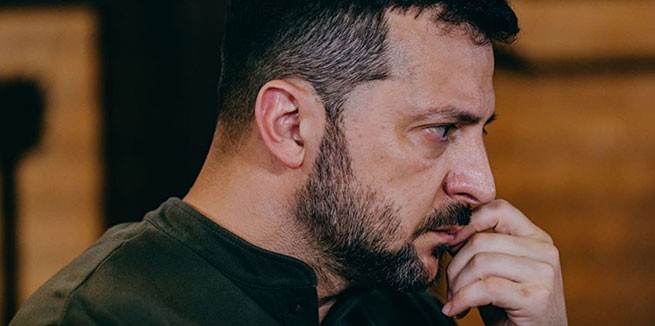
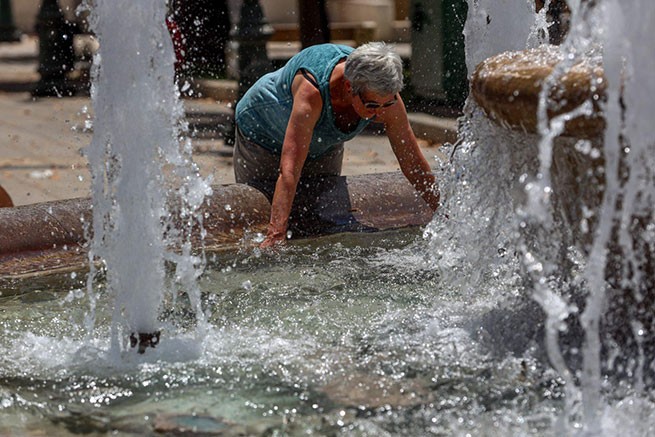
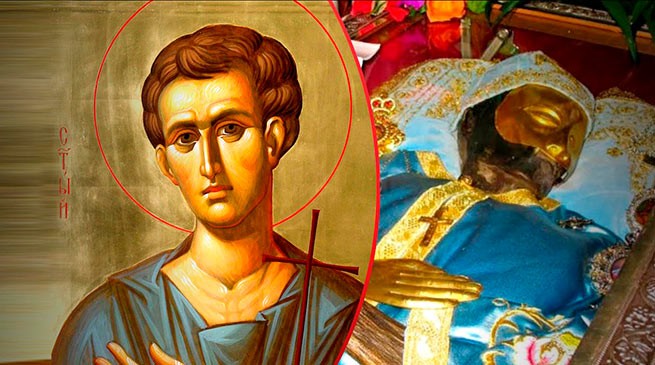

More Stories
Six Greek high school students win medals at International Mathematical Olympiad
Olympic Games: Greek Delegation Athletes Head to Paris
Big "police purge" on Athos